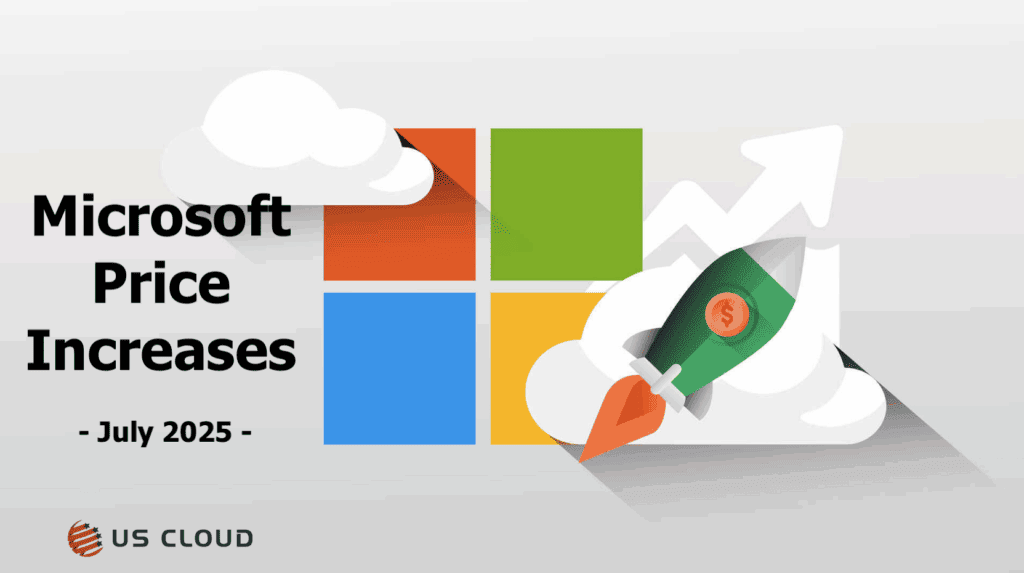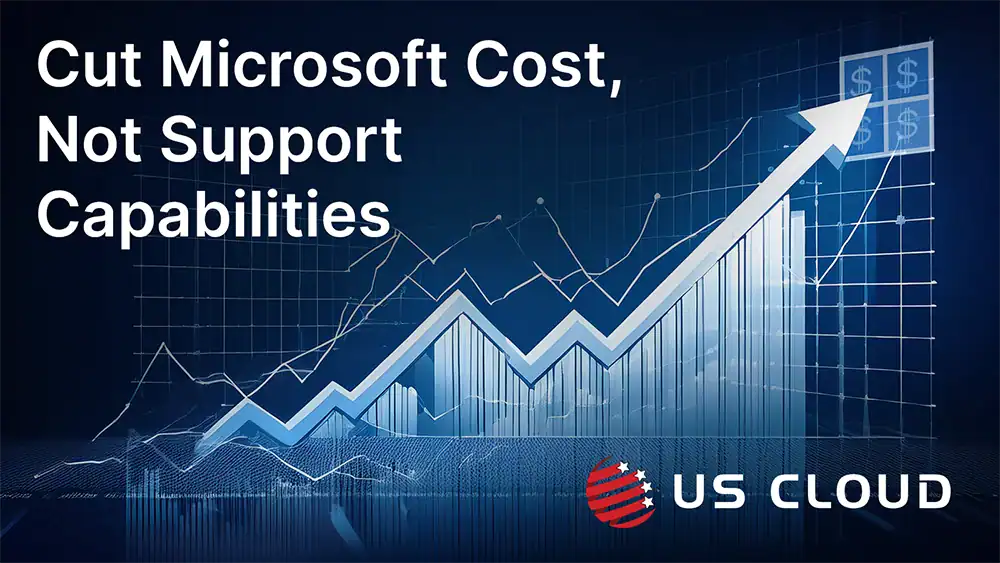
More Microsoft Price Increases for Enterprises Take Effect July 1, 2025.

The enterprise software landscape in 2025 is undergoing a seismic shift, marked by unprecedented price increases that are fundamentally challenging traditional IT budget planning and procurement strategies.
Across the industry, software vendors—led by giants like Microsoft—are implementing aggressive new pricing models, driven by market consolidation, the monetization of artificial intelligence (AI), and the accelerating transition from perpetual to subscription-based licensing.
For IT leaders and procurement teams, these changes demand a proactive, strategic response to avoid budget overruns and ensure continued access to mission-critical software.

2025 Microsoft Enterprise Software Price Increase Matrix
Here’s a comprehensive summary of all the Microsoft software and cloud service price increases for 2025 affecting enterprises worldwide. Read on for details about each product and service cost increase, what’s driving Microsoft’s behavior and recommendations to mitigate or offset the price increases.
Microsoft Enterprise Software Price Increases for 2025
| Product | Old Price | New Price | Increase % | Unit | Effective | Category |
|---|---|---|---|---|---|---|
| Monthly Billing Premium | $0 | +5% | 5% | Percentage | April 2025 | Billing Model |
| Teams Phone Standard | $8 | $10 | 25% | Per user/month | April 2025 | Communications |
| Teams Phone Frontline | $4 | $5 | 25% | Per user/month | April 2025 | Communications |
| Power BI Premium | $20 | $24 | 20% | Per user/month | April 2025 | Business Intelligence |
| Power BI Pro | $10 | $14 | 40% | Per user/month | April 2025 | Business Intelligence |
| Windows Server Std | $1280 | $1408 | 10% | Per server | July 2025 | Operating System |
| Windows Server Datacenter | $3500 | $3850 | 10% | Per server | July 2025 | Operating System |
| Exchange Server | $700 | $770 | 10% | Per server | July 2025 | |
| SharePoint Server | $7000 | $7700 | 10% | Per server | July 2025 | Collaboration |
| Skype for Business Server | $3500 | $3850 | 10% | Per server | July 2025 | Communications |
| Core CAL Suite | Varies by product | +15% | 15% | Per CAL | August 2025 | All on-premises |
| Enterprise CAL Suite | Varies by product | +20% | 20% | Per CAL | August 2025 | All on-premises |
| Dynamics 365 BC Premium | $100 | $110 | 10% | Per user/month | October 2025 | ERP |
| Dynamics 365 BC Essentials | $70 | $80 | 14% | Per user/month | October 2025 | ERP |
| Dynamics 365 BC Device | $40 | $45 | 13% | Per user/month | October 2025 | ERP |
The Scale and Scope of Microsoft’s 2025 Price Increases
Microsoft’s 2025 pricing adjustments are among the most significant in recent memory, impacting virtually every segment of its enterprise software portfolio.
The changes are not isolated; they reflect a broader industry trend toward higher costs for enterprise software, with annual impacts ranging from tens of thousands of dollars for small organizations to millions for large enterprises.
For Microsoft customers, the price hikes are both broad and deep, affecting cloud services, productivity tools, on-premises infrastructure, and emerging AI solutions.
Cloud and Productivity Suite Price Adjustments
Starting April 1, 2025, Microsoft introduced a 5% premium for customers who chose to pay for annual or triennial subscriptions on a monthly basis, rather than upfront. This change affected Microsoft 365, Office 365, Enterprise Mobility + Security, Windows 365, Dynamics 365, and the Power Platform.
While upfront annual or triennial payments remain unchanged, organizations that prefer the flexibility of monthly billing now face higher overall costs—an approach that Microsoft describes as standardizing the billing structure across its channels.
This adjustment has been particularly impactful for organizations that manage large, dynamic workforces or that prefer to align software expenses with cash flow.
The 5% premium, though seemingly modest on a per-user basis, can translate into substantial additional costs at scale. For example, a company with 10,000 users on Microsoft 365 could see its annual bill increase by hundreds of thousands of dollars simply by opting for monthly billing.
Power BI and Teams Phone: Noteworthy Increases
Beyond billing changes, Microsoft has also raised prices for specific products. Power BI Pro, a popular business intelligence tool, saw its price jump from $10 to $14 per user per month—a 40% increase.
Power BI Premium Per User (PPU) increased from $20 to $24 per user per month, a 20% rise. These changes reflect Microsoft’s ongoing investment in AI-powered analytics and the growing demand for advanced data visualization and reporting capabilities.
Similarly, Microsoft Teams Phone Standard licenses increased by 25%, from $8 to $10 per user per month, with Teams Phone Standard for Frontline Workers rising from $4 to $5 per user per month.
These increases are justified by Microsoft as necessary to support continuous innovation and added value in collaboration and communication tools. However, for enterprises with large user bases, the cumulative effect can be significant, prompting a reevaluation of collaboration strategies and vendor relationships.
On-Premises Infrastructure: Higher Costs for Legacy Deployments
For organizations maintaining on-premises infrastructure, Microsoft’s 2025 price increases are especially challenging. Effective July 1, 2025, the price of standalone on-premises server products including Exchange Server, SharePoint Server, and Skype for Business Server will increase by 10%.
This change coincides with the general availability of new Subscription Editions for these products, which align with Microsoft’s Modern Lifecycle policy and emphasize regular updates over traditional versioned releases.
Additionally, Microsoft is raising the price of its Client Access License (CAL) Suites. The Core CAL Suite will increase by 15%, and the Enterprise CAL Suite by 20%, effective August 1, 2025.
These adjustments are part of Microsoft’s broader strategy to encourage migration to cloud-based solutions, where Microsoft 365 and Azure offer greater scalability, security, and value.
However, for organizations with regulatory, operational, or technical constraints that require on-premises deployments, the rising costs present a difficult dilemma.

Dynamics 365: Incremental Increases with Added Value
Microsoft’s Dynamics 365 suite is also subject to price adjustments in 2025. For example, Dynamics 365 Business Central Essentials will increase from $70 to $80 per user per month, a roughly 14% rise, while Premium will move from $100 to $110 per user per month, a 10% increase.
The Device license will rise from $40 to $45 per user per month, a 13% increase1. These changes are accompanied by increased storage entitlements, but the net effect is higher costs for organizations relying on Dynamics 365 for their ERP and CRM needs.
Drivers of Microsoft’s 2025 Price Increases
The 2025 price increases are not arbitrary; they are the result of several powerful industry trends and strategic decisions by Microsoft.
AI Monetization and Innovation
Microsoft’s continued investment in artificial intelligence, particularly with Microsoft Copilot and other AI-driven features, is a major driver of rising costs. The integration of advanced AI capabilities into productivity, analytics, and collaboration tools requires significant investments in research and development, computational resources, and ongoing maintenance. These costs are passed on to customers in the form of higher subscription fees and new pricing models that reflect the value delivered by AI-powered features.
Cloud Security, Compliance, and Advanced Analytics
Microsoft is also investing heavily in cloud security, compliance, and advanced analytics, responding to the growing threat landscape and regulatory requirements. New capabilities such as Microsoft Defender for Office 365, advanced phishing protection, and zero-trust security models add value but also increase operational costs. As a result, Microsoft is adjusting prices to reflect the enhanced security and compliance features embedded in its cloud and productivity suites.
Transition from Perpetual to Subscription Licensing
The shift from perpetual to subscription-based licensing is another key factor behind the price increases. Subscription models provide customers with continuous updates, support, and access to the latest features, but they also create recurring revenue streams for vendors. Microsoft’s move to Subscription Editions for on-premises server products and its emphasis on cloud-based solutions are part of this broader trend, which is reshaping the economics of enterprise software.
Market Consolidation and Competitive Pressures
Market consolidation, particularly in the wake of acquisitions such as Broadcom’s purchase of VMware, has led to more aggressive pricing across the industry. Microsoft’s own pricing adjustments are part of a coordinated effort to maintain competitiveness, fund innovation, and align with the new realities of the enterprise software market.

Strategic Implications for Enterprise IT Leaders
The 2025 price increases present both challenges and opportunities for IT leaders and procurement teams. To navigate this new landscape, organizations must adopt a proactive, strategic approach to software procurement and budget planning.
How to Best Manage Microsoft Price Increases
Audit and Optimize Your Software Portfolio
Regularly auditing your tech stack is essential to identify underutilized or redundant licenses and to ensure that you are only paying for what you need. By segmenting users based on their roles and needs, organizations can tailor their licensing strategies to maximize value and minimize costs.
Evaluate Alternative Solutions and Vendors
With rising costs, it is increasingly important to explore alternative solutions and vendors that may offer comparable functionality at a lower price. Third-party support providers, such as US Cloud, have gained traction among Fortune 500 companies as a cost-effective alternative to Microsoft’s direct support, delivering significant savings and faster response times.
Negotiate with Software Providers
Negotiating with software providers can yield discounts, flexible payment terms, and other benefits, especially for long-term customers or large subscriptions. Building strong relationships with vendors and leveraging your organization’s purchasing power can help mitigate the impact of price increases.
Plan for Future Price Increases
Proactively planning for future price increases is critical to maintaining financial stability and avoiding budget surprises. By forecasting software costs and aligning them with business objectives, IT leaders can ensure that their organizations are prepared for ongoing changes in the software landscape.

Adapting to the New Microsoft Reality
The 2025 Microsoft price increases are a reflection of broader trends reshaping the enterprise software industry: the monetization of AI, the transition to subscription-based licensing, and market consolidation. For IT leaders, these changes demand a strategic, proactive approach to software procurement, budget planning, and vendor management.
By auditing and optimizing their software portfolios, evaluating alternative solutions, negotiating with vendors, and planning for future increases, organizations can navigate the new landscape successfully. In doing so, they can ensure continued access to the tools and technologies that drive business success, while managing costs and maximizing value in an era of unprecedented change.





